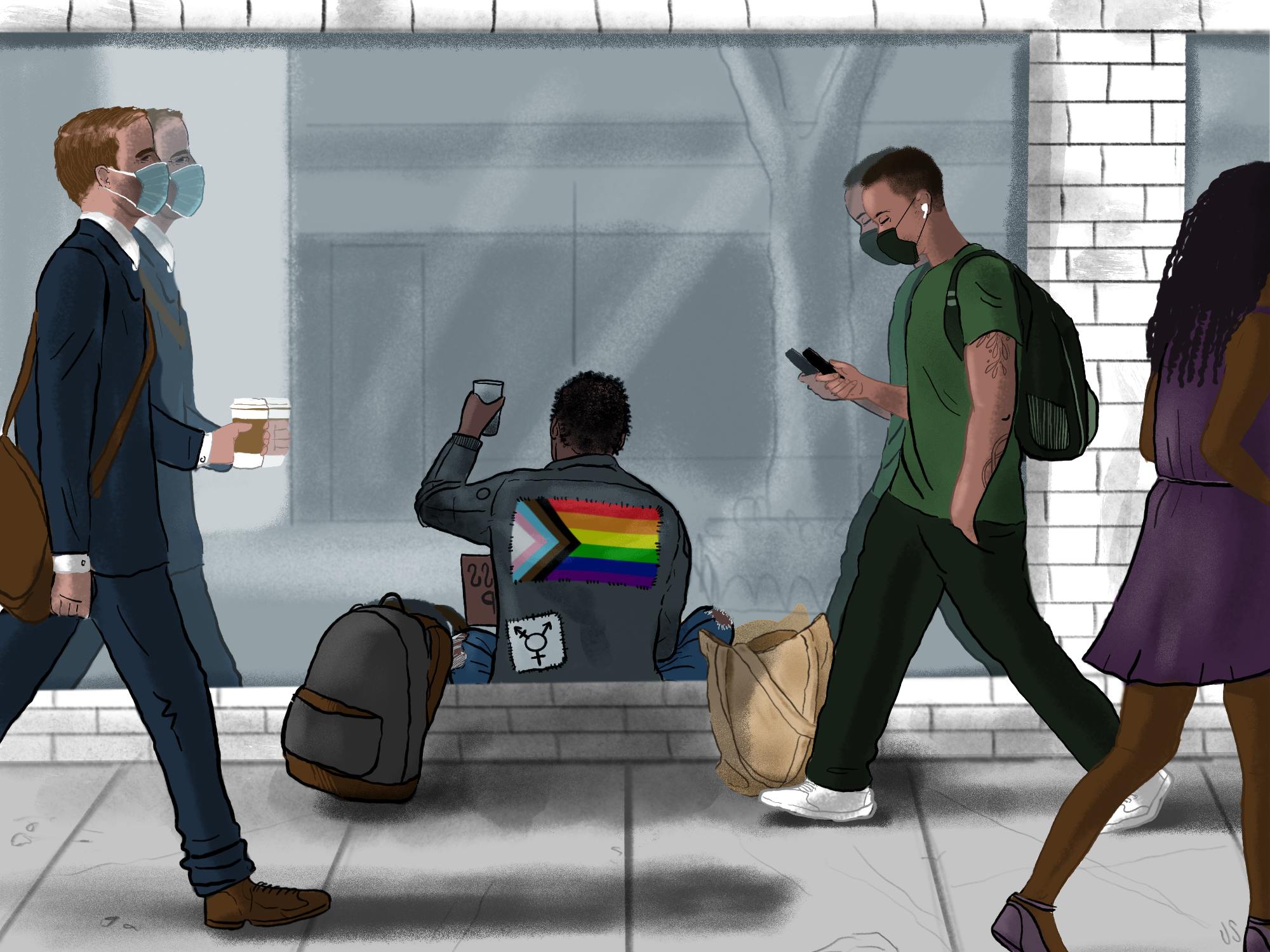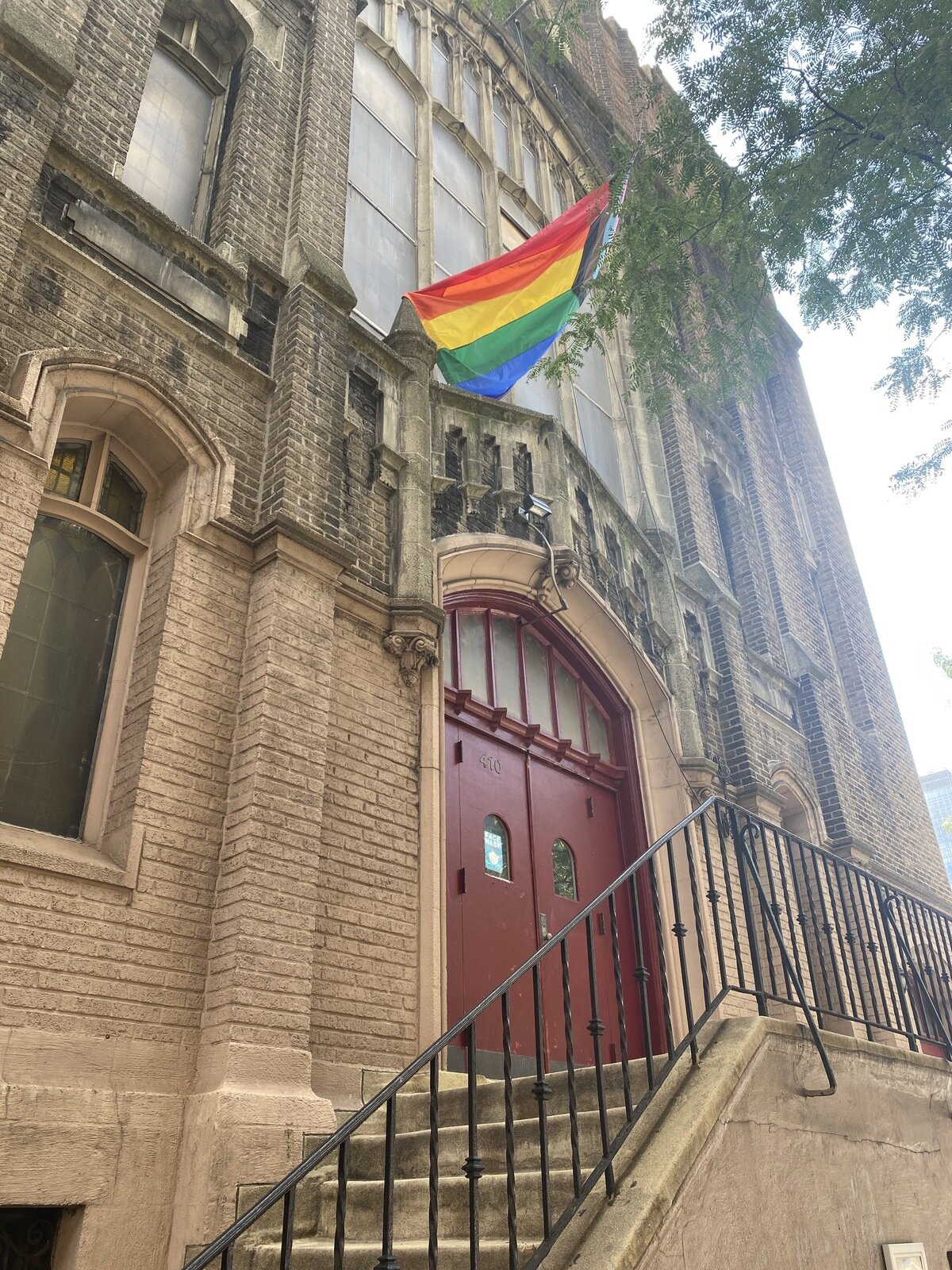Invisible Bodies
Invisible bodies. (Artwork Credit: Jess Suttner)
The entrance to New Alternatives, a resource center for the homeless LGBTQ population, is nondescript except for a tiny buzzer placed on the stone wall of the Metro Baptist Church. The inconspicuous entry is symbolic of the concealed strife inside. Homeless youth have a higher risk of HIV than their housed peers. When the COVID-19 pandemic took root, their health risks amplified. As of July, about 14 percent of the homeless population in New York City received a vaccination versus the 69 percent of adults in Manhattan with at least one dose.
New Alternatives’ clients were not able to receive their first vaccination until the weekend of July 12th, three months after all New York adults were eligible for vaccination. The homeless LGBTQ youth are referred to as clients in New Alternatives and ages range from teenage to their late twenties. They arrive for a variety of reasons: food, health guidance, education, and community.
Metro Baptist Church houses New Alternatives, a resource center for the homeless LGBTQ population in New York City. (Photo credit: Chelsea Noack)
Ramon Leclerc, a former client and current employee of New Alternatives, greets me at the door. He has a tan complexion with sky-crystal blue eyes. He escorts me to the office of Kate Barnhardt, the Director of New Alternatives. Barnhardt, wearing a purple t-shirt and rectangular clear eyeglasses, sits at her desk with a laptop, stacks of paper, and a Tony Fauci figurine donning a face mask.
“When I first heard about what was happening in China, I thought it could probably come here,” Barnhardt explains, “A lot of us who saw HIV happen had similar thoughts.”
The COVID-19 pandemic parallels the HIV/AIDS epidemic’s dark history. Both diseases ignited fiery stigmas, one against the Asian-American population while the other against the homosexual community. In both, scientific miscommunications led to confusion and disorganization.
The diseases themselves are quite different. HIV/AIDS is often transmitted sexually and through needle sharing. COVID-19 is spread through droplets or airborne transmission. Despite their modes of transmission may vary, they are connected. During the time that COVID-19 charged around the globe, HIV did not vanish. It never did.
When the pandemic began, Barnhardt wrote a memo to the city proposing that park bathrooms closed during the pandemic be open and hand sanitizer be given to the homeless population. The requests from Barnhardt, along with those of other homeless coalitions, were financially inconsequential. The officials’ responses, however, were fatally silent; COVID-19 ran rampant in the homeless community, specifically in city shelters.
Fatality rates within New York City shelters have skyrocketed during the pandemic. In 2019, approximately 21 people died each month in homeless shelters. In the month of April 2020, 54 people died in homeless shelters, a 257 percent increase. The death toll prompted the “Homeless to Hotels” program which Mayor Bill de Blasio planned to end in July.
Of the homeless population, roughly 20-40 percent is LGBTQ (adult and youth), a community all too familiar with societal disregard from their experience with HIV/AIDS. Whether those with HIV are more at risk of COVID-19 is unknown. The CDC does not provide much beyond speculation.
Barnhardt reflects on the similarities of HIV and COVID-19, “It has to do with the way the system is set up. Our society does not value certain people and that is reflected in our structures of how funds get allocated.” Barnhardt has been an activist since her stroller days and was one of the youngest members of ACT UP/NY, a grassroots organization working to end the AIDS epidemic. She began New Alternatives in 2008. Roughly one-third of the homeless LGBTQ youth Barnhardt helps has HIV.
This past year, New Alternatives witnessed the most deaths in its history.
“It has to do with the way the system is set up. Our society does not value certain people and that is reflected in our structures of how funds get allocated.” - Kate Barnhardt, the Director of New Alternatives. (Photo credit: Chelsea Noack)
Located on the back of Barnhardt’s office is a framed poster with pictures in blocks. Some blocks are ominously empty, like fated slots of time. She retrieves the glass poster gently from the wall and places it in my hands with care.
“The intersection of HIV, mental illness, poverty, and homelessness is common. Some of them can’t navigate it all to get treatment,” Barnhardt says. The glass poster displayed three clients who fell victim to AIDS: a trans girl who was murdered, a trans boy who committed suicide, and another who died from having an asthma attack on the street.
We sit in a somber silence; two strangers mourning the loss of beautiful faces so salient in their visibility that the glass surface could burst with life.
Perhaps acknowledging people and their strife is a step towards fixing our wrongs. The goal for visibility of the homeless LGBTQ youth is a long road, but what New Alternatives provides, such as HIV prevention/testing and life skills training, helps. What Leclerc does for New Alternatives is also effective; he facilitates career days for clients and companies in New York City as well as advocacy work.
“SnapChat invited us to their office to do a lunch and career day,” Leclerc says. Education and job support can help their clients in significant ways. He adds that “ACT UP was doing a youth homelessness Town Hall, and Kate was busy, so I stepped in and helped out.” Leclerc’s other duties are leading activities, for example bowling, for clients and corporations. The effort is to humanize homelessness for social inclusion. Barnhardt enjoys hiring clients in New Alternatives, which keeps them in the family and off the streets.
The gaping issues still reside in the enduring inequitable structures in our society which leaves the invisible bodies behind. If the LGBTQ youth are more than twice as likely to become homeless as their straight counterparts, another plague will be devastating.
“People don’t realize that homelessness can be literally fatal,” Barnhardt notes. “They think it’s hyperbole. Homeless people tend to be invisible to the media and to regular people.”




